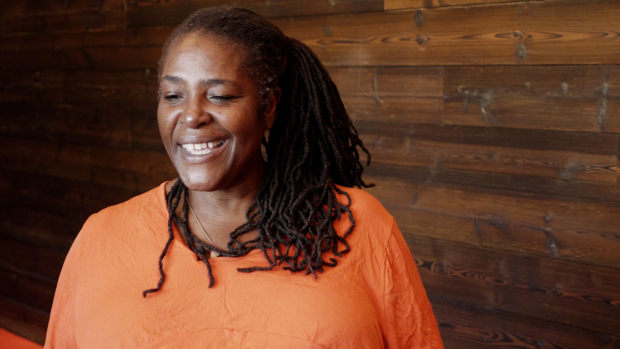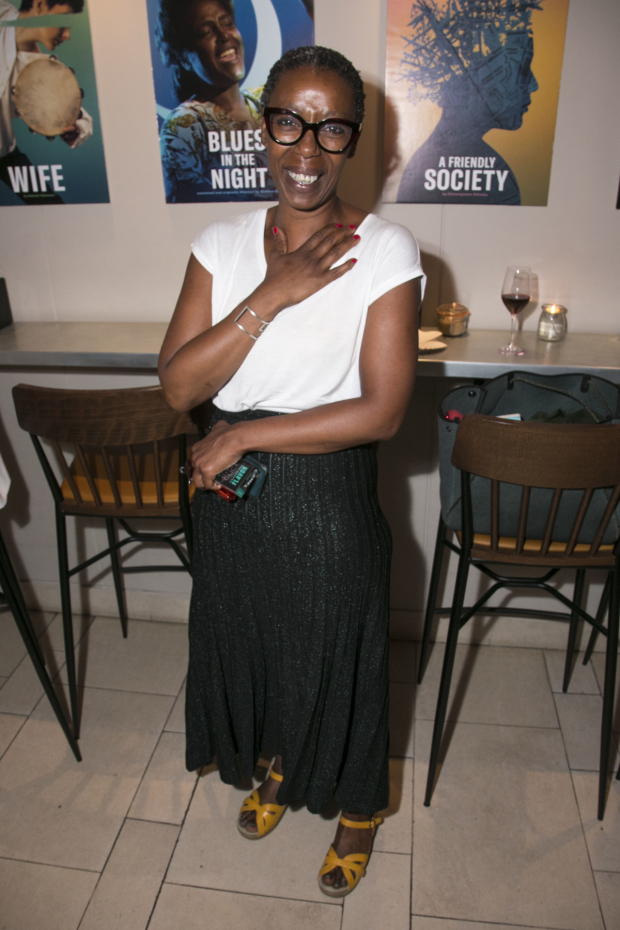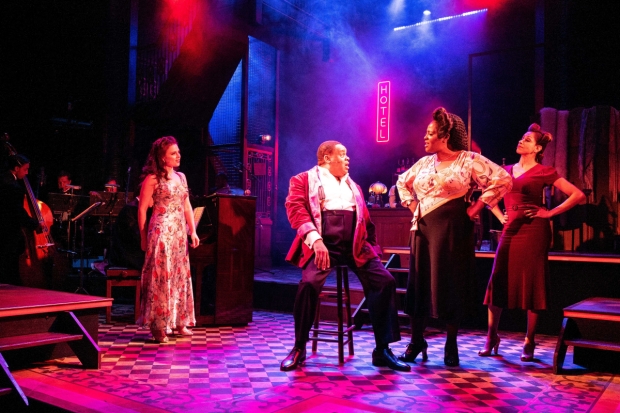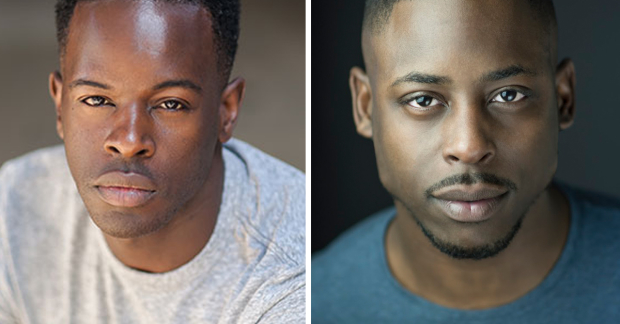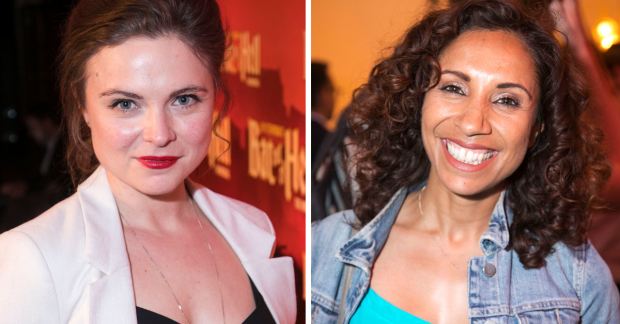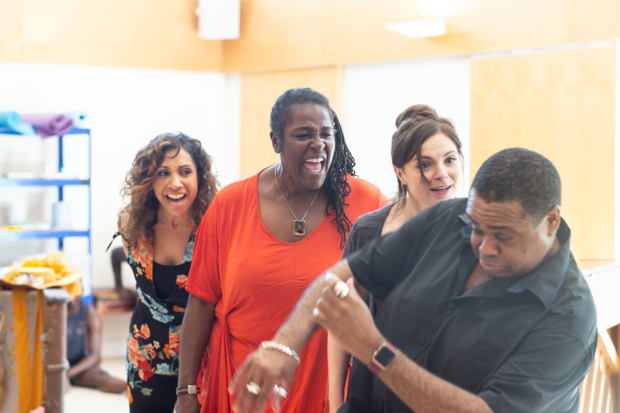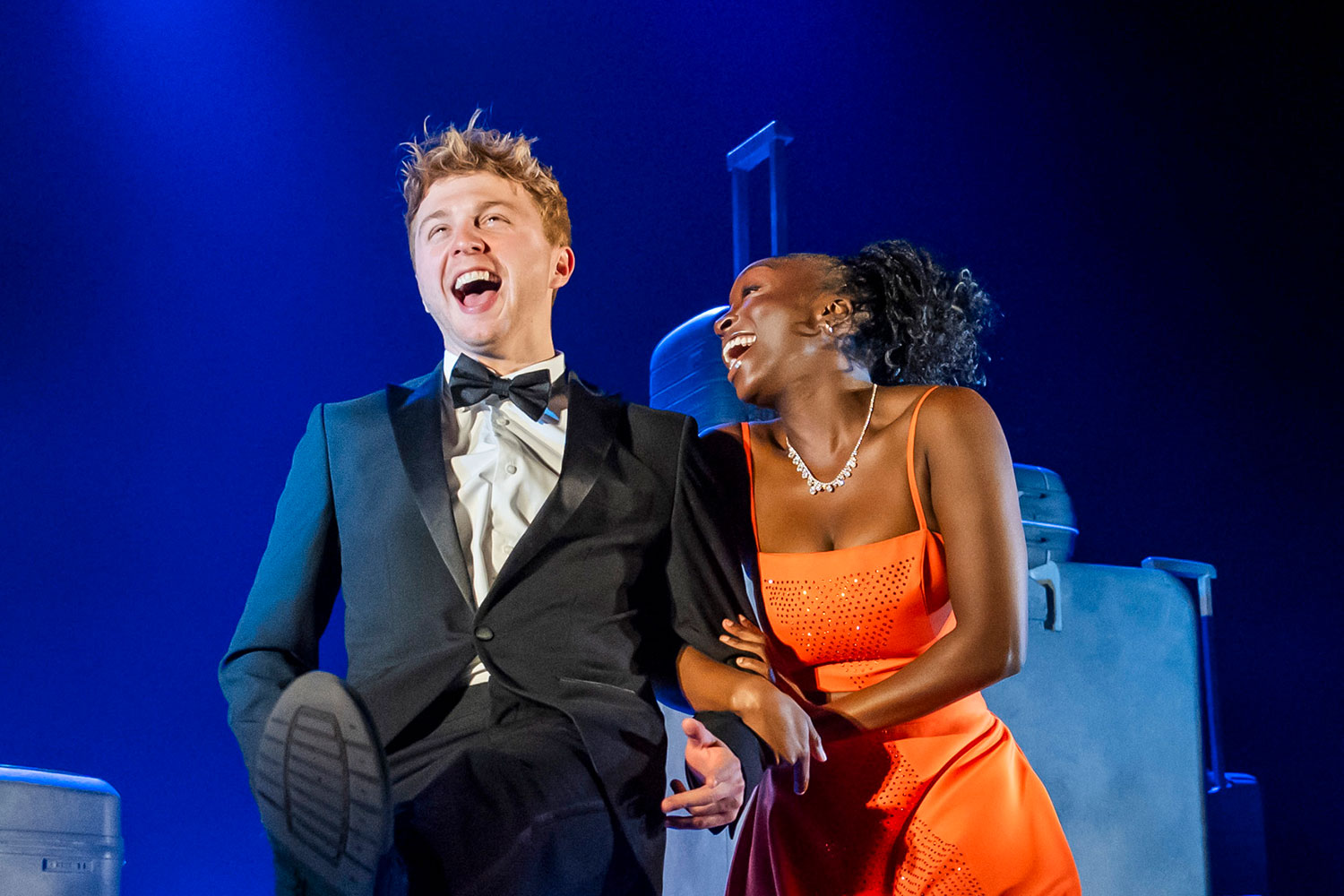Review: Blues in the Night (Kiln Theatre)
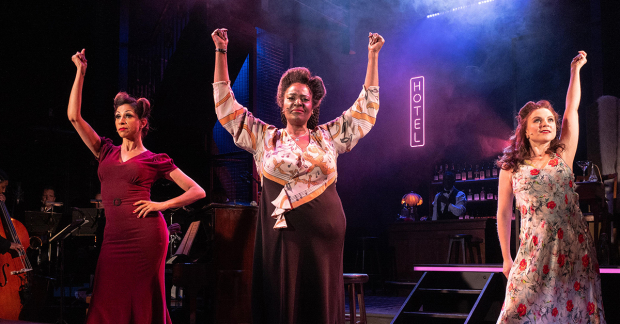
© Matt Humphrey
It's Chicago, 1939, and four residents in a downtown hotel tell their stories. Surrounded by booze, cigarettes and blue rhythms, they find solace and connection in the music of icons, the likes of Bessie Smith, or Duke Ellington.
Blues in the Night has very little narrative. It is rather a series of loosely sketched scenarios held together by multiple songs, each played live by on-stage musicians. Arranged and directed by Mark Dickman, the musicians interact joyfully with the other performers, adding to the woozy, bluesy feel-good ambiance that is more reminiscent of a jazz bar than a hotel.
Rob Jones' design expertly evokes the atmosphere of the time, with winding stairs and an upstage bar holding multiple bottles of liquor. The characters are veiled by smoky air that swirls in the warm, fluorescent lighting (Neil Austin), and each is beautifully clad in bright vintage costumes (Lotte Collett).
Olivier Award-winner Sharon D Clarke plays The Lady – an older and slightly more jaded woman who was once a performer. With her strong, sultry voice, care-for-nothing attitude, and playful one-liners ("I ain't getting older, I'm getting better": she remarks at one point) she proves herself to be the ultimate matriarch of the establishment. Her character also functions as a narrator of sorts, and Clarke plays the role with ease.
For the most part, it is the women who use their voices and who hold the stage for us. Debbie Kurup and Gemma Sutton play The Woman and The Girl respectively: Kurup particularly shines in a rendition of Alberta Hunter's "Two-fisted, Double-jointed, Rough and Ready Man". The Girl seems to be more of an ingénue archetype, although like all the women, there is more to her than meets the eye. The buffoon-like and overconfident Man, played by Clive Rowe, is too goofy and unaware to be seen as a true foil and his drunkenness and arrogance is mocked by the women present.
Blues in the Night takes our rose-tinted ideas of the '30s and places them against a stark reality, challenging our desire to simply leave the theatre feeling nostalgic. Everyone in the show seems to be lonely, bored, addicted or yearning. Most of the numbers are about an unfulfilled desire for romantic connection. In the musical's most emotionally arresting scenes, The Lady sings about the past, using Bessie Smith's "Wasted Life Blues" to express her pain and misery. The Girl tries to move away from her naif image, relying on booze instead. The Man is looking for a woman, but nobody is interested. None of the characters are satisfied.
It is the penultimate song, "I Gotta Right to Sing the Blues", that reaches right into the core of the show – the blues is important because it allows each of the characters to be seen and be heard. And even better, the blues has remained by their side all along.
If you're looking for a strong and engaging narrative, then Blues in the Night could disappoint. If, however, you're looking for a well-constructed piece of theatre that stands the test of time, then Susie McKenna's production will leave you clicking your fingers, dancing and craving some cold, sloe gin.



